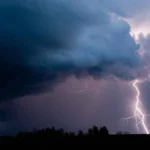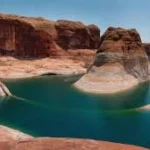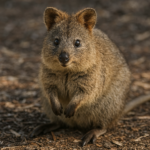
The Indus River, one of the longest rivers in Asia, is not just a vital waterway; it is a lifeline that has shaped the history, culture, and ecology of the regions it traverses. Flowing over 3,180 miles from its source in Tibet through the heart of Pakistan, the Indus has been central to the development of ancient civilizations, particularly the remarkable Indus Valley Civilization. This river is a source of sustenance for millions, supporting agriculture, industry, and diverse ecosystems. We will delve into 22 fascinating facts about the Indus River, exploring its geographical significance, historical importance, and the rich biodiversity it supports. Whether you are a history buff, a nature enthusiast, or simply curious about this majestic river, join us as we uncover the stories and wonders of the Indus River.
The Indus River is one of the longest rivers in Asia, stretching over 3,180 miles. This extensive length makes it the 21st longest river in the world, flowing from its source in Tibet through a diverse range of landscapes, including mountains, plateaus, and plains, before emptying into the Arabian Sea. The river’s length is significant not only for its geographical importance but also for the various ecosystems and communities it supports along its course.
The Indus River is Pakistan’s national river. It holds immense cultural and historical significance for the country, serving as a vital lifeline for agriculture, industry, and daily life. The river is deeply embedded in the national identity and is often symbolically linked to the resilience and resourcefulness of the Pakistani people. It plays a crucial role in the economy, particularly in the agricultural sector, which relies heavily on the river’s water for irrigation.
The Indus River starts in Tibet and flows through Pakistan and Jammu and Kashmir to the Arabian Sea. Its journey begins at the Tibetan Plateau, where it is fed by melting snow and glaciers. As it traverses the rugged terrain of the Himalayas and the Karakoram range, it carves out deep gorges and valleys. Upon entering Pakistan, the river continues its path through the fertile plains of Punjab and Sindh, eventually reaching the Arabian Sea, where its delta supports a rich biodiversity and serves as a crucial fishing ground.
The Indus River gets water from big rivers like the Kabul, Sutlej, Jhelum, and Chenab. These tributaries contribute significantly to the overall flow and volume of the river, enhancing its capacity to support agriculture and sustain ecosystems. The confluence of these rivers creates a complex hydrological system that is vital for the irrigation of millions of acres of farmland in Pakistan, making the Indus River Basin one of the most important agricultural regions in the country.
Snow and glacier melt from the Karakoram, Hindu Kush, and the Himalayas contribute to the river’s flow. This meltwater is particularly crucial during the summer months when temperatures rise and snow begins to thaw, providing a steady supply of fresh water. The glaciers in these mountain ranges are essential for maintaining the river’s flow, especially in dry seasons, and they play a critical role in the hydrology of the region, impacting water availability for both human use and ecological health.
The Indus River is an important water source for the Indus Valley Civilization. This ancient civilization, which thrived from around 3300 to 1300 BCE, relied heavily on the river for agriculture, trade, and sustenance. The fertile alluvial plains provided by the river allowed for the cultivation of crops such as wheat and barley, which were staples of the diet. The civilization’s urban centers, including Mohenjo-Daro, were strategically located near the river, facilitating trade and cultural exchange.
The Indus River has been an important source of irrigation for agriculture in Pakistan. The river’s extensive network of canals and irrigation systems has enabled the transformation of arid and semi-arid lands into productive agricultural areas. This irrigation infrastructure supports the cultivation of various crops, including rice, cotton, and sugarcane, which are vital for the country’s economy. The reliance on the river for irrigation underscores its significance in ensuring food security for millions of people in Pakistan.
The Indus River has diverse fish species, including the rare Indus River dolphin. The river’s aquatic ecosystem is home to a variety of fish species, which are crucial for local fisheries and the livelihoods of many communities. The Indus River dolphin, a unique and endangered species, is particularly noteworthy. It is adapted to the river’s freshwater environment and is an indicator of the overall health of the river’s ecosystem. Conservation efforts are essential to protect this species and the biodiversity of the river.
The name India is believed to be derived from the Indus River. The etymology traces back to the Sanskrit word “Sindhu,” which referred to the river. When the Persians invaded the Indian subcontinent, they referred to the river as “Hindu,” which eventually evolved into “India.” This historical connection highlights the river’s significance in shaping the cultural and geographical identity of the region, as well as its influence on the naming of the country.
The Indus River flows more water annually than the Nile, Tigris, and Euphrates combined. This impressive flow underscores the river’s importance as a major water source in South Asia. The volume of water that the Indus carries supports not only agriculture but also industry and domestic use for millions of people. The river’s capacity to provide such a substantial amount of water makes it a critical resource for both ecological sustainability and human development in the region.
The Indus River has several national parks and wildlife reserves. These protected areas are crucial for conserving the unique biodiversity of the river and its surrounding ecosystems. National parks and wildlife reserves along the Indus River, such as the Chashma Barrage Wildlife Sanctuary and the Indus Dolphin Reserve, provide habitats for various species of flora and fauna, including migratory birds, mammals, and endangered species. These protected areas not only serve to conserve wildlife but also promote ecotourism, allowing visitors to appreciate the natural beauty and ecological significance of the region while raising awareness about conservation efforts.
The Indus River existed even before the formation of the Himalayas. Geological studies suggest that the river has been flowing for millions of years, predating the uplift of the Himalayan mountain range. This ancient river system has shaped the landscape of the Indian subcontinent and played a significant role in the geological history of the region. The Indus’s long history contributes to its significance as a key geographical feature and its role in the evolution of the ecosystems and civilizations that have developed along its banks.
The Indus River area is home to threatened animals like the Asian Elephant and the Snow Leopard. These species are integral to the biodiversity of the region and face various threats, including habitat loss and climate change. Conservation initiatives are essential to protect these animals and their habitats. The presence of such iconic species highlights the ecological importance of the Indus River and the need for sustainable management practices to ensure the survival of both wildlife and their ecosystems.
The Indus River provides fresh water for millions of people in Pakistan. It is the primary source of drinking water for many communities and is crucial for agriculture, industry, and domestic use. The river supports the livelihoods of approximately 230 million people who depend on its waters for their daily needs. As water scarcity becomes an increasing concern, the sustainable management of the Indus River is vital to ensure that future generations have access to this essential resource.
The Indus River is home to a number of rare and threatened plant species. The diverse habitats along the riverbanks, including wetlands and floodplains, support a variety of flora, some of which are endemic or endangered. These plant species play critical roles in maintaining the ecological balance of the river ecosystem and provide essential resources for wildlife. Conservation efforts aimed at protecting these plants are important for preserving the biodiversity and ecological health of the Indus River.
The Indus River is a key migration path for birds like the Siberian crane and the Bar-Headed Goose. Each year, these migratory birds travel thousands of miles to reach their wintering grounds, with the Indus River providing vital stopover points along their journey. The river’s wetlands and surrounding habitats offer food and shelter for these birds, making it an important site for avian biodiversity. Protecting these migratory routes is crucial for maintaining the populations of these species and supporting the overall health of the ecosystem.
The Indus River is home to a number of ancient cultural and religious sites. Throughout history, the river has been central to the development of various civilizations, and many archaeological sites, temples, and historical landmarks can be found along its banks. These sites reflect the rich cultural heritage of the region and are of great significance to local communities. Preserving these cultural landmarks is important for maintaining the historical narrative and identity of the people living in the Indus River basin.
Mohenjo-Daro, or Mound of the Dead, was a big city of the Indus Valley Civilization. This ancient city, located near the Indus River, is one of the best-preserved urban sites from this civilization. Mohenjo-Daro showcases advanced urban planning, including sophisticated drainage systems, public baths, and grid-patterned streets. The site provides valuable insights into the social, economic, and cultural aspects of the Indus Valley Civilization, highlighting the importance of the river in supporting one of the world’s earliest urban centers.
The Indus River passes through the Karakoram mountains. This region is known for its dramatic landscapes, towering peaks, and unique biodiversity. The river’s journey through the Karakoram range is characterized by steep gorges and fast-flowing waters, which have shaped the geography of the area. The river’s role in this mountainous region is crucial for supporting local ecosystems and providing water resources for communities living in the challenging terrain.
The Indus River is believed to have been named after the Ancient Hindu God Sindhu. The river’s name reflects its cultural significance in ancient texts and traditions. In Hindu mythology, the river is often associated with life and sustenance, symbolizing the importance of water in spiritual and practical aspects of life. This historical connection emphasizes the river’s role not only as a physical resource but also as a cultural and spiritual symbol for the people of the region.
The Indus River Delta is the fifth largest delta in the world. This delta is formed where the river meets the Arabian Sea, creating a complex network of waterways, wetlands, and estuaries. The delta is rich in biodiversity and serves as a critical habitat for various species of fish, birds, and other wildlife. It supports local fisheries and provides livelihoods for communities engaged in fishing and agriculture. The delta’s unique ecosystems are essential for maintaining the health of both marine and terrestrial environments, making it a vital area for conservation efforts and sustainable resource management.
The Indus River Valley Civilization, spanning from 3300-1300 BCE, is one of the world’s earliest urban cultures. This civilization flourished along the banks of the Indus River, benefiting from its fertile plains and reliable water supply for agriculture. The people of this civilization developed advanced urban centers, trade networks, and sophisticated social structures. Archaeological findings, including well-planned cities like Harappa and Mohenjo-Daro, reveal insights into their daily life, economic practices, and technological innovations. The Indus Valley Civilization’s legacy continues to influence cultural and historical narratives in the region today, highlighting the enduring connection between the river and the development of human societies.
Frequently Asked Questions about the Indus River:
1. What is the Indus River?
The Indus River is one of the longest rivers in the world, flowing through China, India, and Pakistan. It originates in the Tibetan Plateau in China and travels approximately 3,180 kilometers (1,976 miles) before emptying into the Arabian Sea. The river is crucial for agriculture, water supply, and hydroelectric power in the regions it flows through.
2. Where does the Indus River originate?
The Indus River originates from the Tibetan Plateau, specifically from the Bokhar Chhu, which is located near Lake Mansarovar in Tibet. It flows through the Ladakh region of India before entering Pakistan.
3. What countries does the Indus River flow through?
The Indus River flows through three countries:
- China: The river begins in Tibet.
- India: It flows through the Ladakh region.
- Pakistan: The majority of the river’s course is in Pakistan, where it becomes a vital water source for the country.
4. Why is the Indus River important?
The Indus River is critically important for several reasons:
- Agriculture: It supports the agriculture of the Indus Valley, which is one of the most fertile regions in Pakistan.
- Water Supply: It provides water for drinking, irrigation, and industrial use.
- Hydroelectric Power: The river is harnessed for hydroelectric power generation, contributing to the energy needs of the region.
- Cultural Significance: The river has historical significance and is part of the cultural heritage of the regions it flows through.
5. What is the Indus Waters Treaty?
The Indus Waters Treaty is a water-sharing agreement signed in 1960 between India and Pakistan, brokered by the World Bank. It allocates the use of the Indus River and its tributaries, allowing Pakistan to have control over the waters of the Indus, Jhelum, and Chenab rivers, while India has rights to the Ravi, Beas, and Sutlej rivers. The treaty aims to resolve disputes over water resources and promote cooperation between the two countries.
6. What are the major tributaries of the Indus River?
The major tributaries of the Indus River include:
- Jhelum River
- Chenab River
- Ravi River
- Beas River
- Sutlej River
These tributaries play a significant role in contributing to the flow and water resources of the Indus River.
7. What are the environmental challenges facing the Indus River?
The Indus River faces several environmental challenges, including:
- Water Scarcity: Over-extraction of water for agriculture and urban use can lead to scarcity.
- Pollution: Industrial discharge and agricultural runoff contribute to water quality issues.
- Climate Change: Changes in precipitation patterns and glacial melt can affect the river’s flow.
- Dams and Diversions: Construction of dams can alter natural flow and impact ecosystems.
8. What wildlife can be found along the Indus River?
The Indus River and its surrounding areas are home to diverse wildlife, including:
- Indus River Dolphin: An endangered species found in the river.
- Various Fish Species: Including the Indus Mahseer, which is important for local fisheries.
- Bird Species: Many migratory and resident birds inhabit the wetlands along the river.
9. How does the Indus River affect local communities?
The Indus River is vital for local communities as it provides water for drinking and irrigation, which supports agriculture and livelihoods. Many people depend on the river for fishing and transportation. However, challenges like flooding and water scarcity can also impact these communities significantly.
10. What efforts are being made to protect the Indus River?
Various initiatives are underway to protect the Indus River, including:
- Conservation Programs: Focused on protecting endangered species and habitats.
- Pollution Control: Efforts to reduce industrial pollution and improve water quality.
- Sustainable Water Management: Promoting practices that balance water use with conservation.









